Authors:
ABSTRACT
Aim
To evaluate the oral condition and treatment needs of young athletes with intellectual disability (ID) from 53 countries of
Europe and Eurasia who participated in the Special Olympics European Games held in Antwerp, October 2014.
Methods
A cross-
sectional study was undertaken with data collected through standardised procedures from consenting athletes under 21 years of age.
Oral hygiene habits, reports of oral pain and presence of gingival signs, sealants, untreated caries and missing teeth were recorded.
Statistics: Data analysis was performed in SPSS to produce descriptive statistics and explanatory variables for untreated decay, and
gingival signs of disease were tested with Multilevel Generalized Linear Mixed Models.
Results
Five hundred three athletes
participated in this study (mean age 17 yrs). Untreated decay was recorded in 33.4% of the participants and 38.7% of them had signs of
gingival disease. Absence of untreated decay was associated with lower chances of gingival signs, while absence of sealants was
related with higher chances of untreated decay. CONCLUSIONS: There is consistent evidence of persistent need for increased
promotion of oral health, as well as preventive and restorative treatment in young athletes with ID in Europe and Eurasia. Due to the
limited predictive capacity of the studied variables for oral disease, further studies including other related factors are needed.
PLUMX METRICS
Publication date:
Keywords:
Issue:
Vol.17 – n.1/2016
Page:
Publisher:
Cite:
Harvard: C. Fernandez, I. Descamps, K. Fabjanska, I. Kaschke, L. Marks (2016) "Treatment needs and predictive capacity of explanatory variables of oral disease in young athletes with an intellectual disability in Europe and Eurasia", European Journal of Paediatric Dentistry, 17(1), pp9-16. doi: https://www.ejpd.eu/wp-content/uploads/pdf/EJPD_2016_1_1.pdf
Copyright (c) 2021 Ariesdue

This work is licensed under a Creative Commons Attribution-NonCommercial 4.0 International License.
